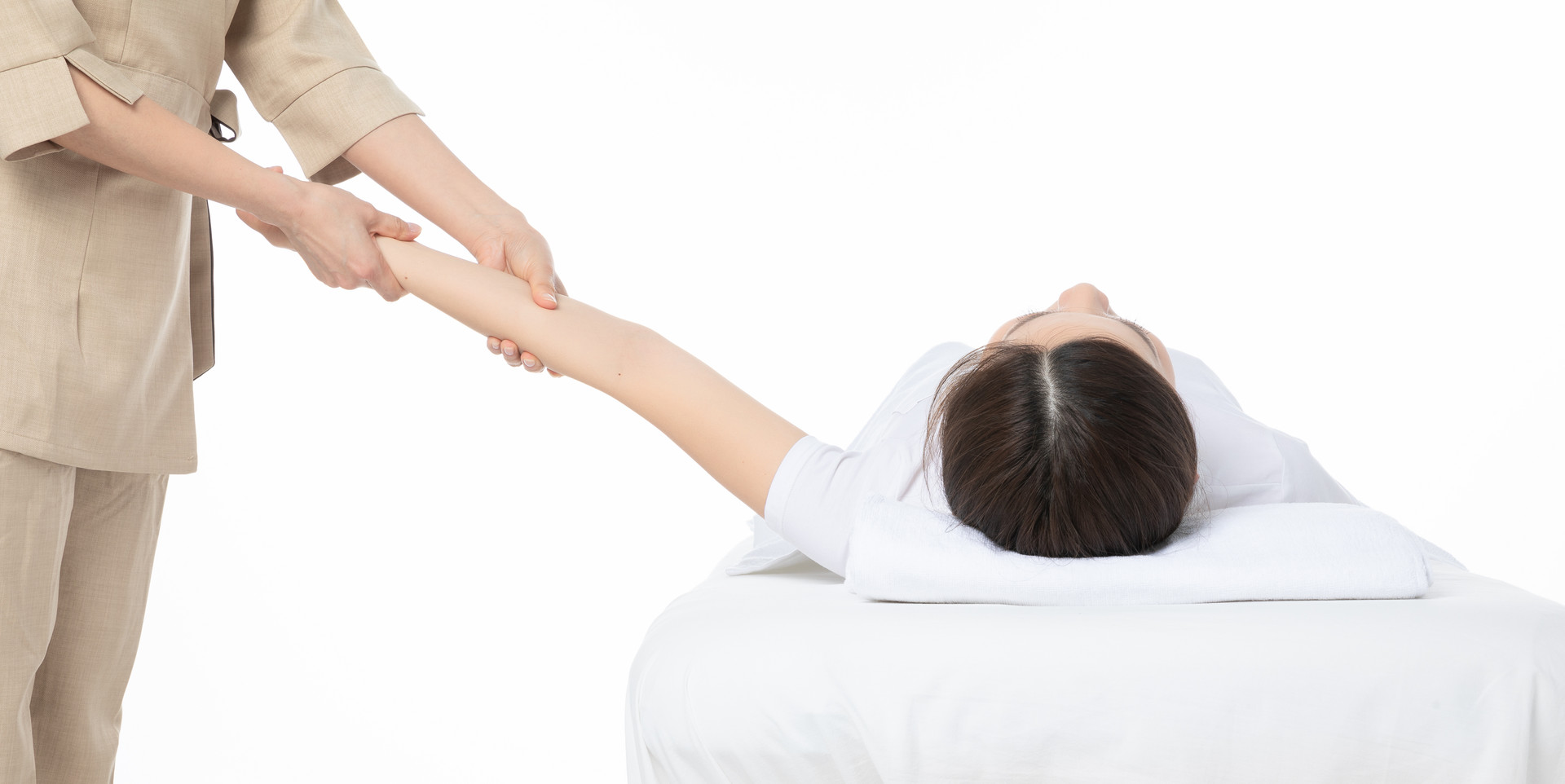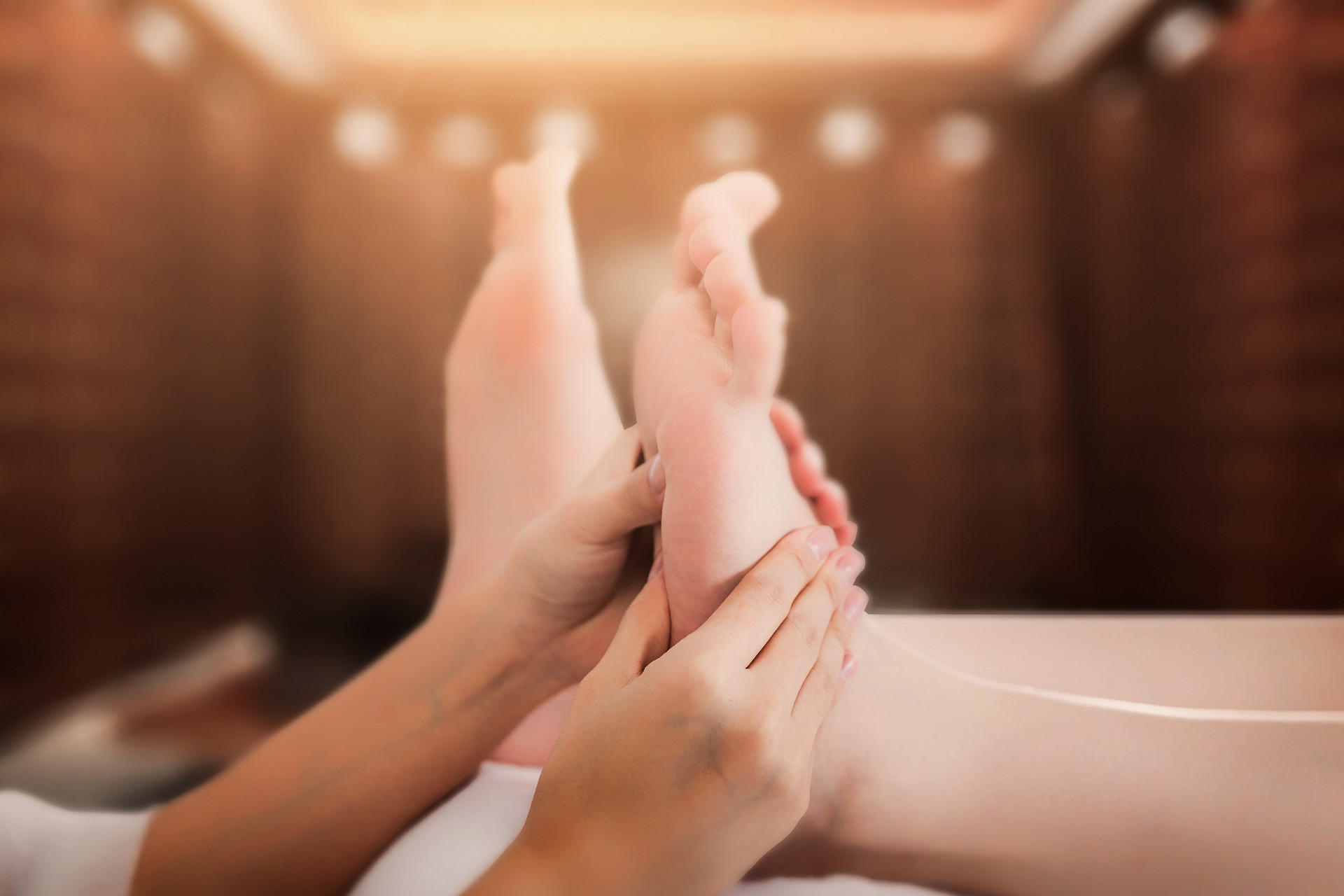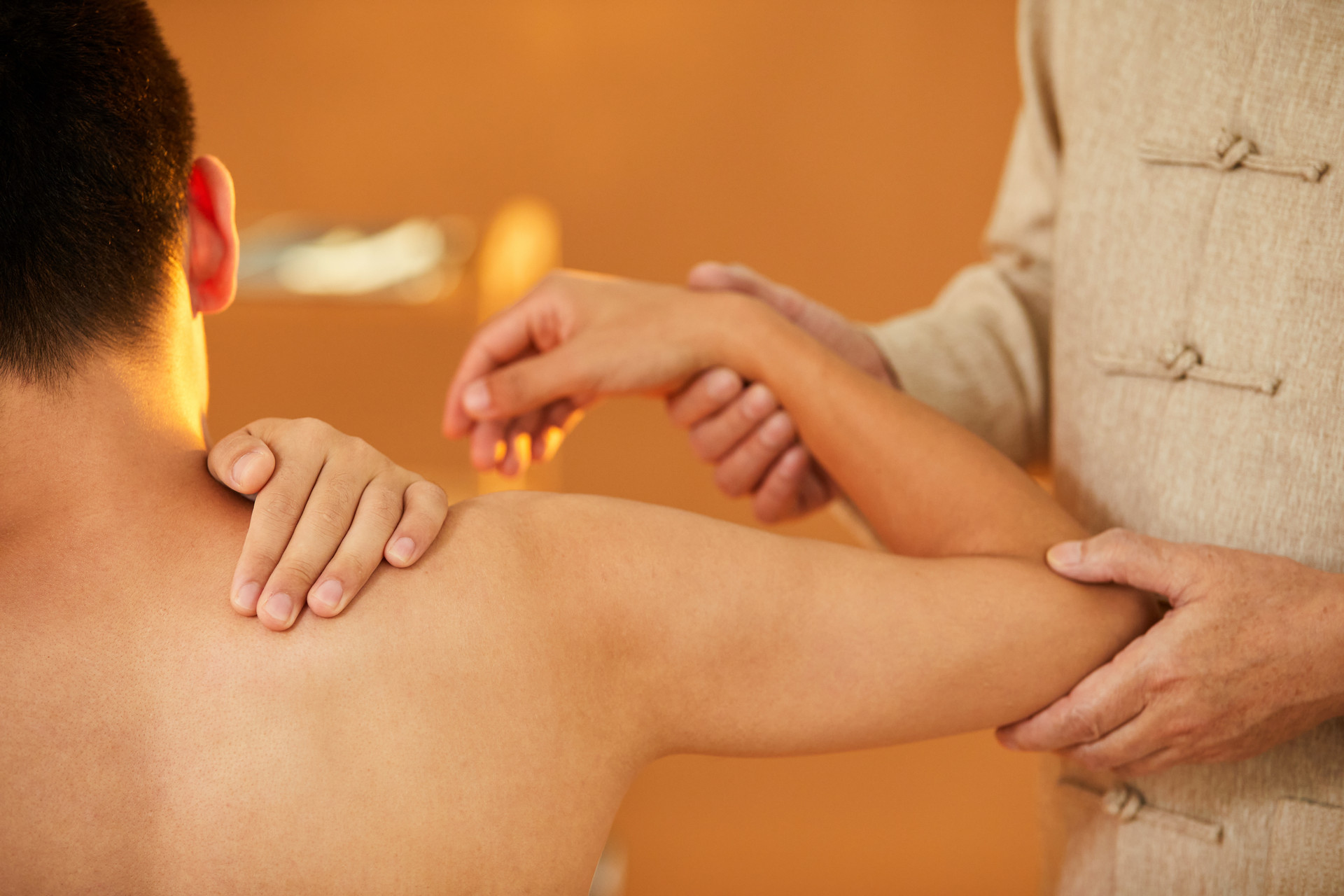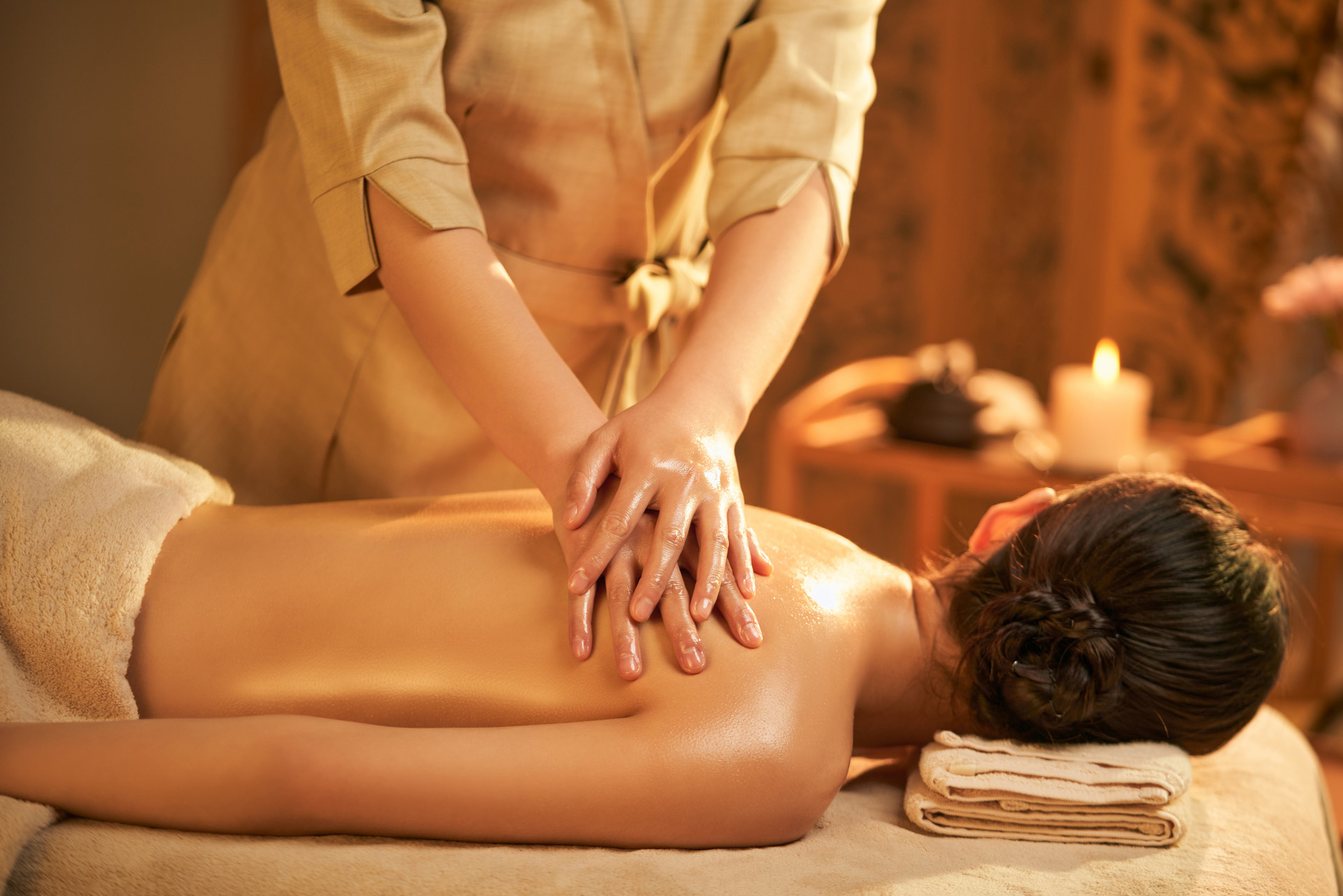The pediatric massage commonly uses certain techniques, which are mainly described as follows:
[Pushing Method]
Pushing method is widely used in clinical practice of pediatric massage. There are four types: straight pushing, divided pushing, combined pushing, and rotating pushing.
1. Straight pushing method (Fig.196): The therapist uses the radial edge of the thumb or the surface of the index and middle fingers to push in a straight line in one direction.
The movement should be light and continuous, passing by like a broom sweeping dust, with the aim of not causing redness on the skin. The frequency of the technique is approximately 250-300 times per minute.
The pushing must be done in a straight line without deviation to avoid affecting other meridians.

This method is commonly used for "linear acupoints" and "five meridians" in pediatric massage.
Effects: Clears heat, relieves exterior symptoms, stops diarrhea, promotes bowel movement, and calms the mind.
Indications: Fever due to external pathogenic factors, diarrhea, constipation, irritability, and restlessness.
2. Divided pushing method: The therapist uses both thumbs with the fingerprint side as the center, pushing towards both sides. This is called the divided pushing method, also known as "divided method".
When applying this method, both hands should exert equal, gentle, and coordinated force. Generally, the divided pushing is performed 20-30 times.
This method is commonly used on the forehead, chest, abdomen, back, and wrist and palm area.
Effects: Regulates qi and blood, harmonizes yin and yang.
Indications: Fever, cough, abdominal distension, constipation, etc.
3. Combined pushing method: The combined pushing method is the opposite of the divided pushing method, also known as "combined method" or "harmonizing method".
The technique requirements are the same as the divided pushing method, except that the pushing direction is reversed.
It is applied to the same areas as the divided pushing method.
Effects: Harmonizes yin and yang, regulates qi and blood.
Indications: Fever, abdominal distension, constipation, etc.
In clinical practice, the combined pushing method is often used in combination with the divided pushing method to achieve complementary effects.
4. Rotating pushing method: The therapist lightly attaches the fingerprint side of the thumb to the acupoint being treated and makes a clockwise rotating movement. This is called the rotating pushing method (◎).
The rotating pushing method only involves the rotation of the thumb on the surface of the skin and generally does not affect the subcutaneous tissues. The frequency of the technique is approximately 150-200 times per minute.
This method is mainly used for "five meridians" acupoints.
Effects: Strengthens the spleen and stomach, tonifies the lungs and kidneys.
Indications: Pediatric deficiency syndromes such as weak spleen and stomach, poor digestion, and lung deficiency cough.
[Pulling Method]
Pulling refers to the arc-shaped or circular movement in the treatment area, which is called the pulling method. Some also refer to it as the pulling pushing method. It is one of the commonly used techniques in pediatric massage.

The therapist attaches the fingerprint side of the thumb or the middle finger to the acupoint being treated and makes an arc-shaped pushing movement from one acupoint to another, or makes a circular pushing movement around the acupoint.
When performing the pulling method, the force should be light and only friction on the surface of the skin should be applied, without affecting the subcutaneous tissues. The frequency of the technique is approximately 80-100 times per minute.
This method is suitable for acupoints with an arc-shaped or circular arrangement.
Effects: Clears heat, relieves restlessness, broadens the chest, and regulates qi.
Indications: Fever, chest tightness, vomiting, etc.
[Pinching Method]
Using the thumb and other fingers to symmetrically squeeze and twist the treatment area is called the pinching method.
If the pinching method is applied to the spine
| 1 2 > >> >>|







